What is a Scuba Regulator?
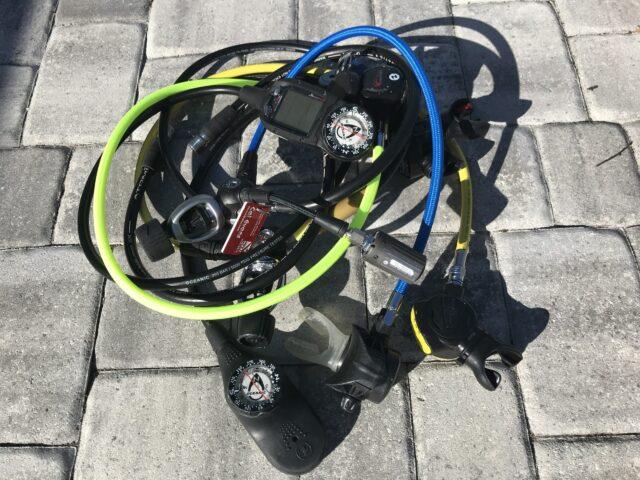
In the world of scuba diving, one essential piece of equipment is the scuba regulator. But what exactly is a scuba regulator and how does it work? Most entry level scuba diving certifications cover regulators in some detail. That’s because it is so important that divers know what it is, how to use it, and how to deal with a few regulator problems during a dive.
Right now though, we want to take a look at the basics of a regulator. If you are a newly certified scuba divers, this is a refresher from your open water training. If you’ve yet to get certified, this will explain the different parts of a scuba regulator, what they do, how they fit together.
At it’s core, a scuba regulator is a device that allows divers to breathe compressed gas underwater. It consists of several key components that work together to provide a continuous supply of gas to the diver at the correct pressure.
The First Stage
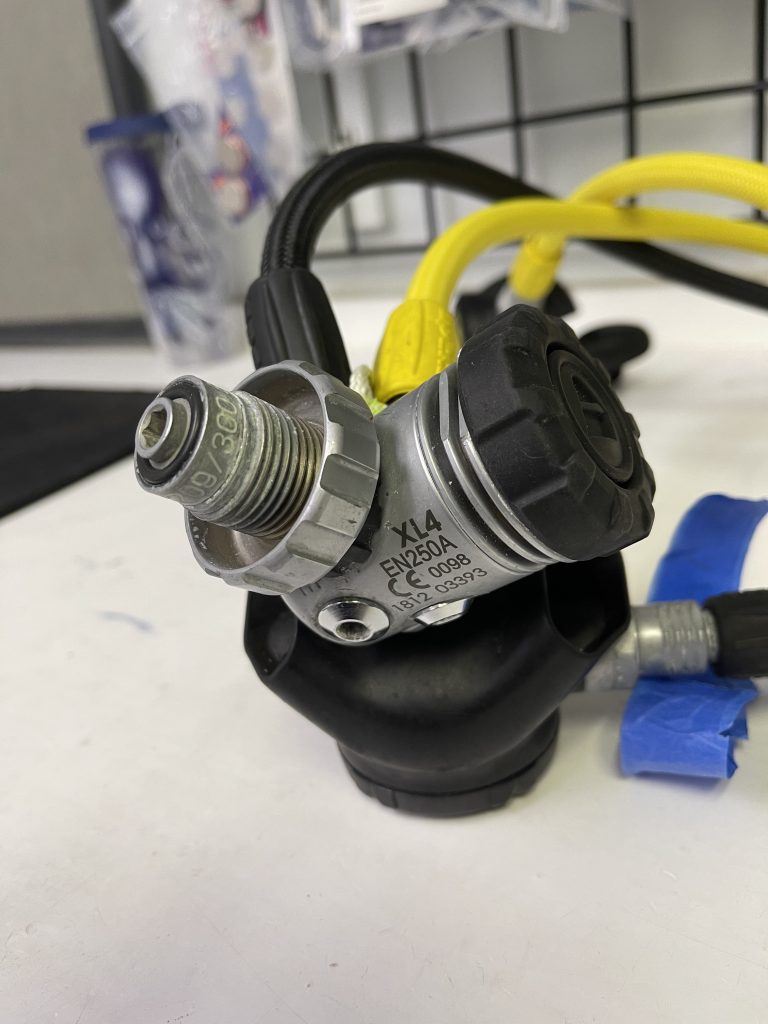
The first stage is connected to the scuba tank and reduces the high-pressure gas to an intermediate pressure.
The first stage regulator has various ports for attaching hoses so that it can deliver gas to the other components. Some of these ports are “high-pressure” ports. Things like the Submersible Pressure Gauge or an air-integrated dive computer connect to high-pressure ports. Hig-pressure ports give accessories access to the gas straight from the tank without being stepped down.
Other ports are “low-pressure ports”. These ports are for accessories that do not want or need access to the high-pressure gas. Things like the second-stage regulator, the Octo, and the low-pressure inflator hose connect to low-pressure ports.
It is very important that accessories connected to your first stage regulator get connected to the proper port. This is what it is always advisable to let a trained and certified service technician connect or disconnect hoses and accessories and do all the work on your regulator.
The Second Stage
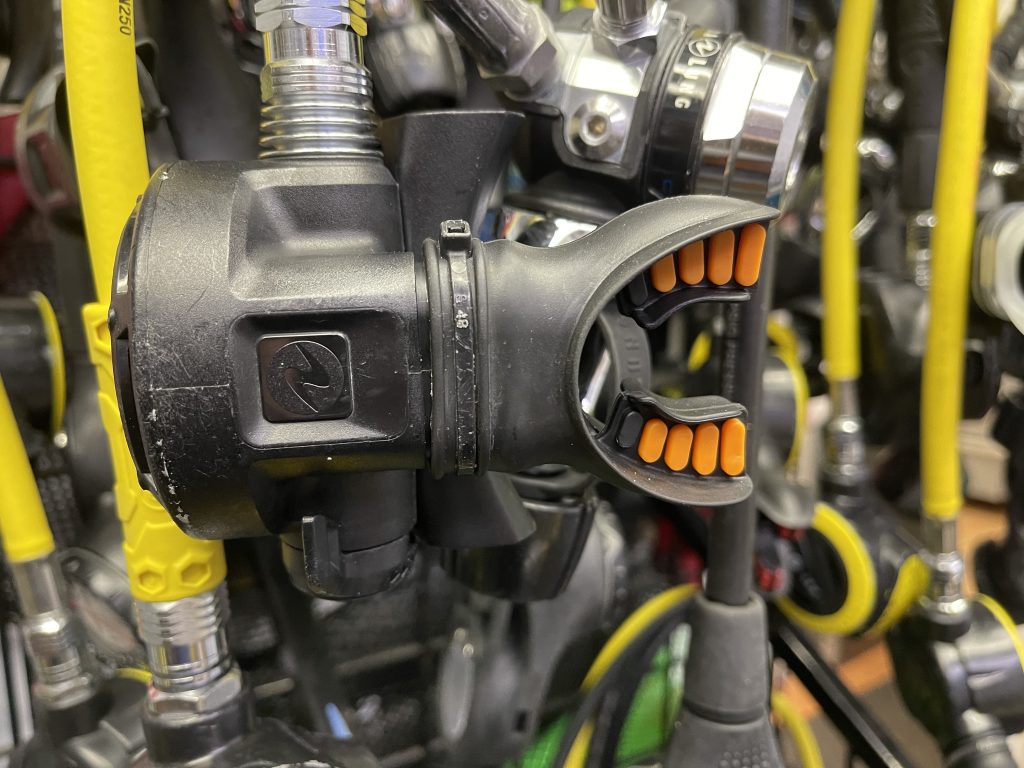
The second stage is the part you place in your mouth to breathe. It delivers gas on demand when you inhale and has a purge button to clear water from the regulator.
One part of the regulator that everybody ignores is the mouthpiece on the second stage. Most regulators come with a really bad mouthpieces. After a couple of uses, most divers will purchase a little better mouthpiece that looks similar to the one in the picture above. I would recommend that when you buy your first regulator, you invest in a “moldable mouthpiece“. They don’t cost much more than a regular mouthpiece but they are much better.
Before you attach a moldable mouthpiece to your regulator, you mold it to your mouth. You can trim it so that it fits comfortably as well. The differences is that because it’s molded exactly for your mouth and dental pattern, you will have a lot less jaw fatigue. Trust me that it’s worth the extra few dollars it costs. It’s one of the few low-cost pieces of gear that I recommend to each of my students who are thinking about buying their own gear.
The Alternate Air Source
This is an additional second stage that serves as a backup in case you need to share air with a buddy in an emergency. This is also commonly referred to as your “Octopus” or “octo”. Your alternate air source will usually have a different colored hose to make it easy to locate. It should be located somewhere prominently on your torso, easily accessible by other divers. Many modern BCDs have a pocket where the hose for your octo can be curled up while the regulator itself sticks out. My personal rig has a little rubber loop hanging on my right shoulder and the mouthpiece of my octo fits snugly in. A quick tug and it’s free in case my buddy needs it.
Octo regulators are usually yellow like the house they use to connect to the first stage regulator. The regulator itself is usually a lower-quality device than a diver’s primary. Some diver invest in top of the line octo regulators, but most don’t. The penalty for running out of air is that you have to use the cheaper gear.
While you should have your octo services every time you service your regulator, it’s a good idea to take a couple of breaths off of it each dive to make sure it’s functioning properly. For most new scuba divers, this is part of their BWRAF or gear setup routine. For some more experienced divers, it’s a simple as swapping to it while at depth, taking a couple of breaths, and swapping back to their primary and re-securing their octo.
The Submersible Pressure Gauge (SPG)
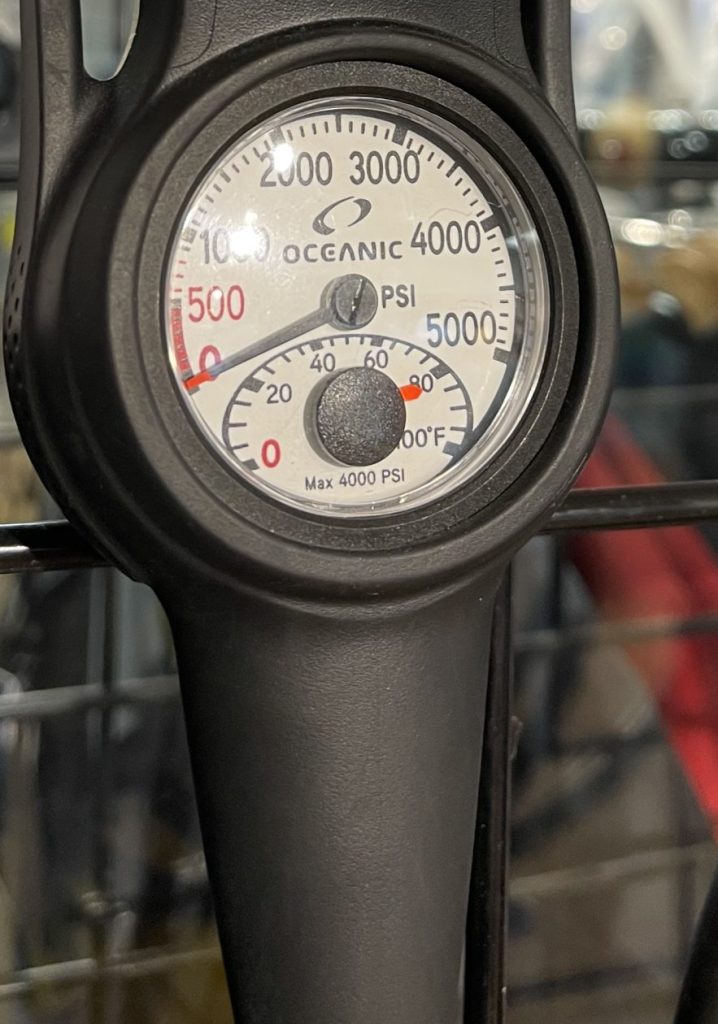
Your SPG is usually a manual gage on your console. It’s on a hose that is hooked into your first stage regulator. It indicates the amount of gas remaining in your tank. This allows you to monitor your gas supply during the dive.
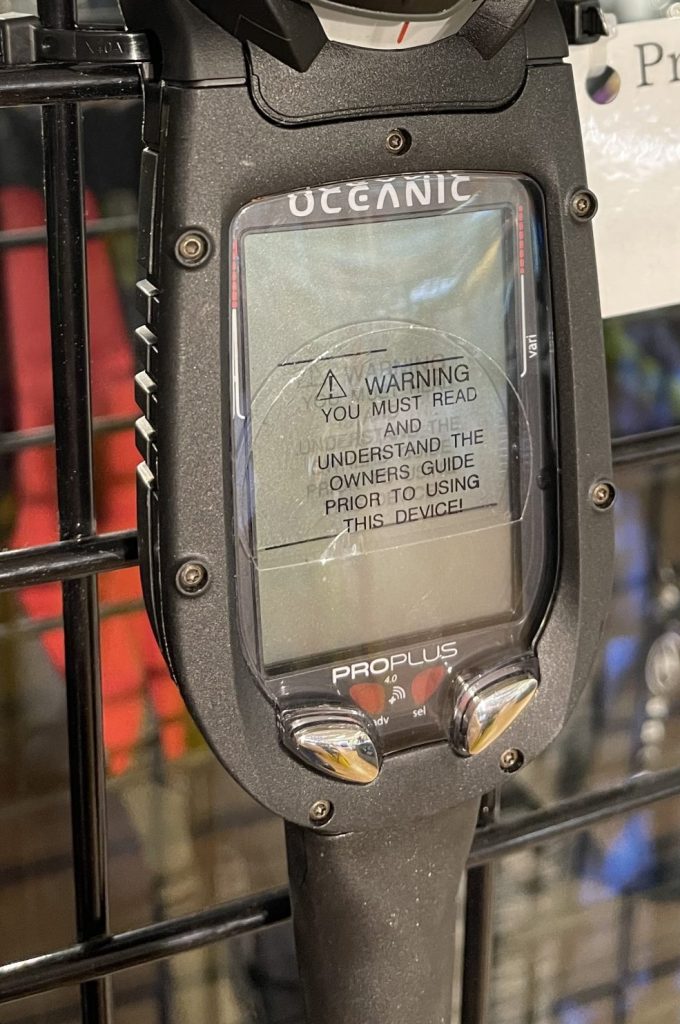
Many newer computers are “air integrated” meaning that they are connected to your regulator by the hose that used to be for your SPG. They will handle the function of being your SPG as well as monitoring things like depth and bottom time.
Many advanced divers who use air-integrated computers will also have a backup SPG, just in case the computer fails. These are usually smaller and tucked away where they don’t float around during a dive but can be accessed if needed.
Low Pressure Inflator Hose (LPI)
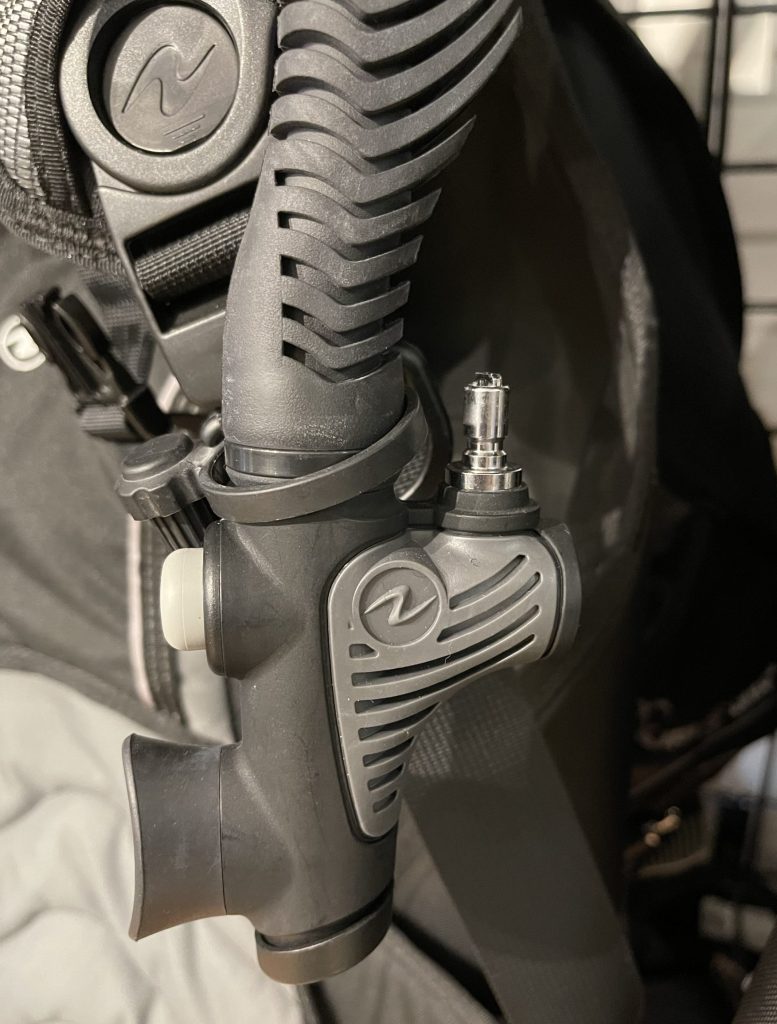
The final part of a regulator is the Low-Pressure Inflator Hose (LPI). As the name indicates the LPI connects to a low-pressure port. It is a short hose that runs down your shoulder and connects to your BCD’s inflator, usually by a British Knuckle Coupler (BNC) connector. (Those little silver connectors that rip up your fingers trying to connect or disconnect them.)
Your LPI supplies air to your BCD’s inflator so that you can adjust your buoyancy.
Wrap Up
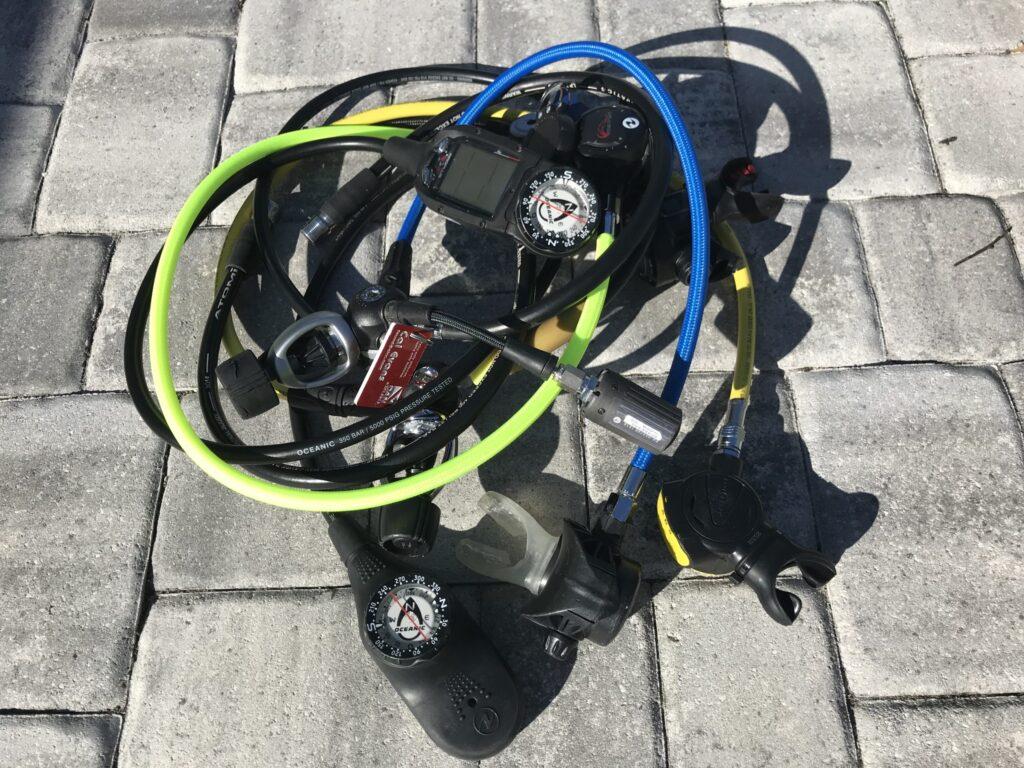
All these parts come together to make a scuba regulator, a device that gives scuba divers their superpower of breathing underwater.
Regulators are well designed and sturdy devices. Even so, you have to take care of your regulator, as with all of your scuba gear. Proper maintenance and care are crucial to make sure that when you need it, it is working for you, regardless of whether you are in a quarry, on your favorite reef, or a shore dive like the beautiful Blue Heron Bridge.

Join Our Mailing List For New Scuba Divers
If you like this tip for new scuba divers, join our mailing list. You’ll get a new tip delivered to your inbox each week. Learn to dive confidently!